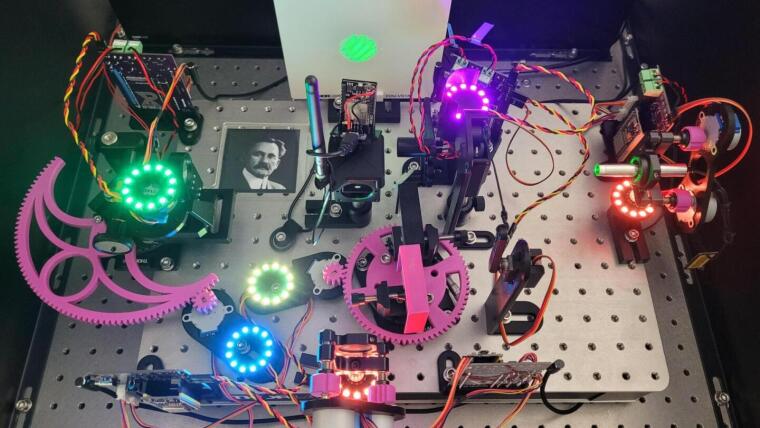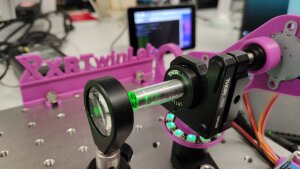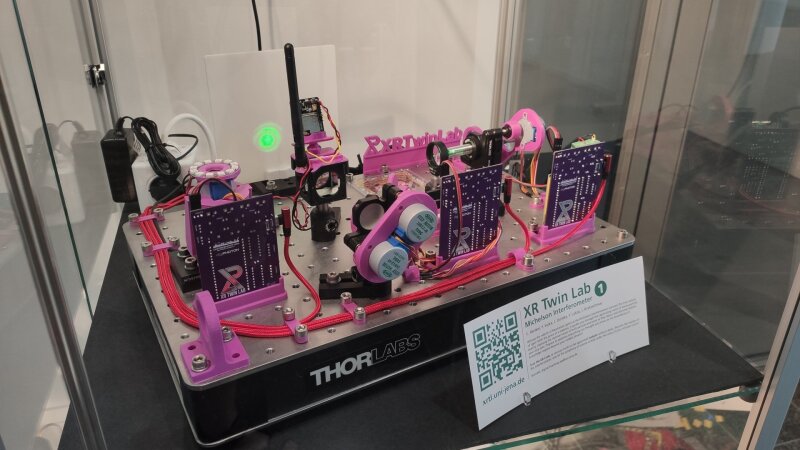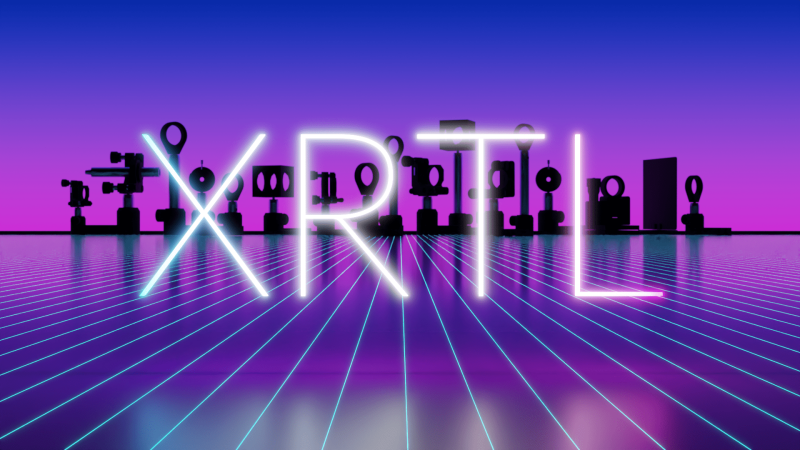
Laser mount with remote controlable actuators.
Image: Fabian LukasRemote labs are a trendsetting way of teaching, communicating, and experiencing science as well as enabling collaborative work. Unfortunately, the implementation of remote access involves a cost-intensive development or at least requires a certain technical skillset. To establish remote labs across disciplines, especially outside the field of IT and engineering, the technical access threshold must be low enough to support a self-contained implementation by researchers, assistants, and technical staff.
Hereby, we have developed the open-source toolbox XR TwinLab (XRTL) for the research field of photonics. XRTL provides a modular way of building a web-based application to control optical experimental setups with the integration of VR and AR endpoints.
Try out the application yourself!
XRTL Showcase at the ACP
Image: Fabian LukasLinks
Find all the information about the development process and how to create your own XRTL:
Current XRTL projects
XRTL Logo
Image: Fabian LukasThe digitalization Team of the ASP is currently working hand in hand with the Lichtwerkstadt to create several XRTL experiments, including:
- XR TwinLab Showcase (operating > Try it out by yourself!External link)
- XR TwinLab Michelson Interferometer (operating > Link to the setup description)
- XR TwinLab Adaptive Optics (operating > Link to the setup description)
- XR TwinLab Fundamentals (will be online soon)
User Interface
User interface of the XRTL experiment Adaptive optics with highlighted control elements and activated beam path overlay.
Screenshot: Fabian LukasThe user interface features a detailed 3D model of the real-world experiment, which serves both as a visualisation and for controlling the individual components.
This demonstration shows the typical use case of the XRTL web app. After logging in, users can arrange the control elements as they wish and observe the effects of their inputs on the experimental setup in real time.
Contact
Fabian LUKAS
Image: PrivateFabian LUKAS
Email: fabian.lukas@uni-jena.de
Phone: +49 3641-9-47553
Digital Photonics and Digital Teaching Lab at Max Planck School of Photonics



